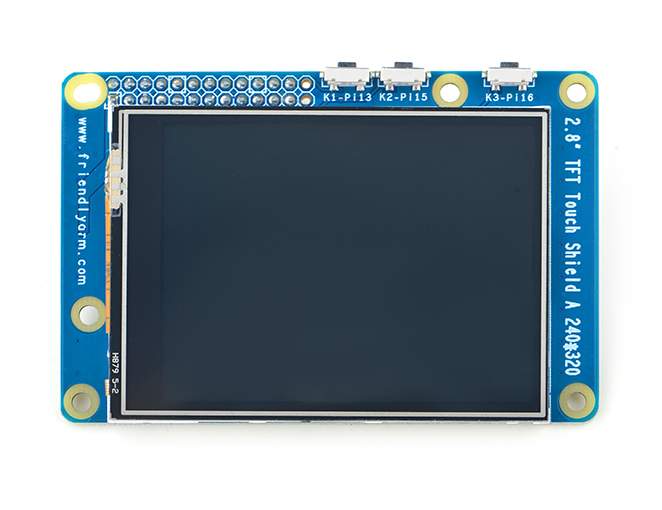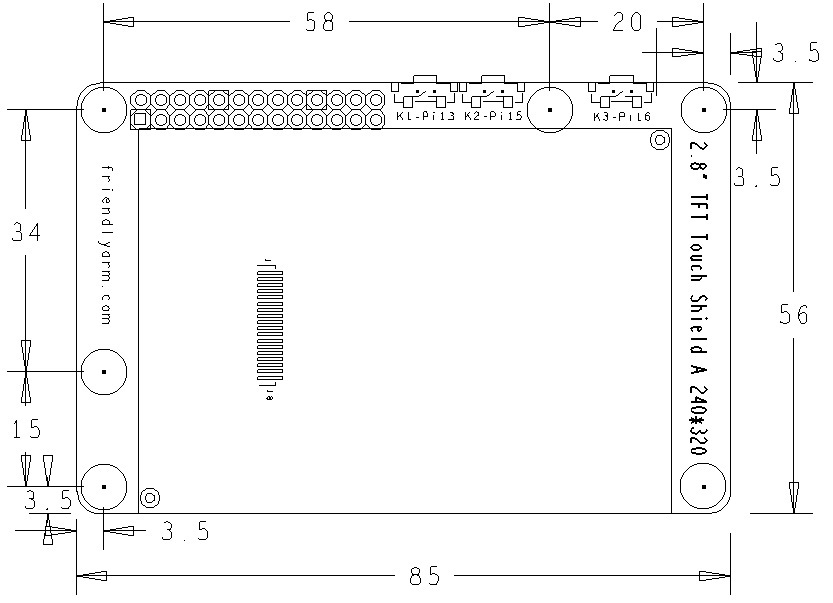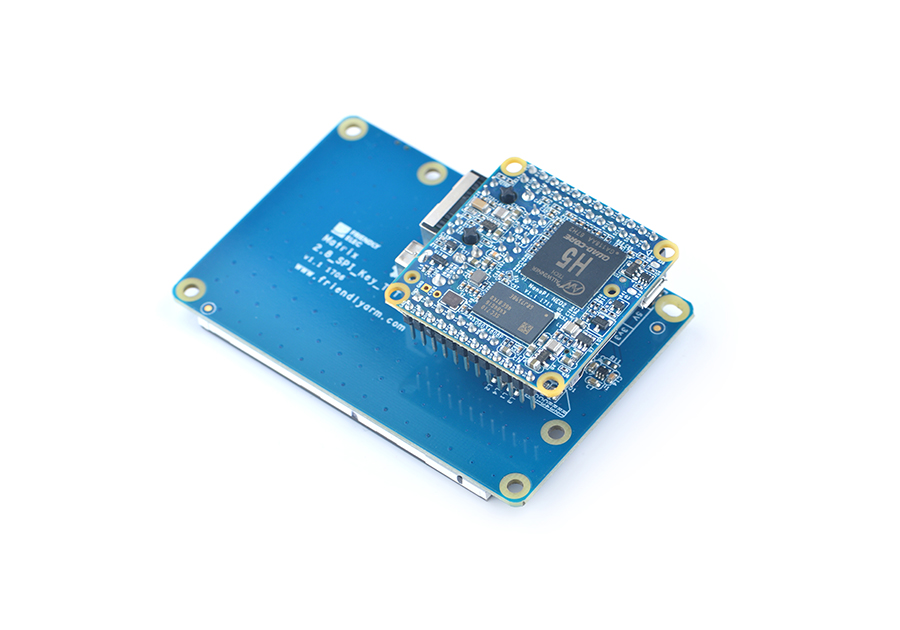Difference between revisions of "Matrix - 2'8 SPI Key TFT"
(→Compile & Run Test Program) |
(→Compile & Run Test Program) |
||
| Line 211: | Line 211: | ||
[[File:qt-demo-status.png|frameless|600px|qt-demo-status]]<br> | [[File:qt-demo-status.png|frameless|600px|qt-demo-status]]<br> | ||
| − | === | + | ===Under H3 & Linux-3.4 Kernel/S5P4418 & Linux-3.4 Kernel=== |
====在Ubuntu-Core上运行Qt程序==== | ====在Ubuntu-Core上运行Qt程序==== | ||
| − | + | ===Run Qt Programs on Ubuntu-Core=== | |
| − | + | FriendlyElec's Ubuntu-Core supports Qt. Users can run a Qt application by following the steps below.<br> | |
| + | Boot Ubuntu-Core on a board and clone the Matrix code samples: | ||
<syntaxhighlight lang="bash"> | <syntaxhighlight lang="bash"> | ||
$ apt-get update && apt-get install git | $ apt-get update && apt-get install git | ||
$ git clone https://github.com/friendlyarm/matrix.git | $ git clone https://github.com/friendlyarm/matrix.git | ||
</syntaxhighlight> | </syntaxhighlight> | ||
| − | + | After it is done a "matrix" directory will be generated. | |
| − | + | Compile and Run Qt Test Program: | |
<syntaxhighlight lang="bash"> | <syntaxhighlight lang="bash"> | ||
cd matrix/demo/nanopi-status | cd matrix/demo/nanopi-status | ||
| Line 227: | Line 228: | ||
./run.sh /dev/fb-st7789s | ./run.sh /dev/fb-st7789s | ||
</syntaxhighlight> | </syntaxhighlight> | ||
| − | nanopi- | + | The nanopi-status is a simple Qt program which shows system information. Here is what you expect to observe:<br> |
| − | [[File:st7789s-status.png|frameless|600px|st7789s-status]] | + | [[File:st7789s-status.png|frameless|600px|st7789s-status]] |
| − | + | The run.sh script will load TFT's driver and run the Qt program. After the driver is successfully loaded a device node /dev/fb-st7789s will be generated. You can check whether or not the driver is loaded successfully by running the following commands | |
<syntaxhighlight lang="bash"> | <syntaxhighlight lang="bash"> | ||
lsmod | lsmod | ||
| Line 235: | Line 236: | ||
fbtft_device 29235 0 | fbtft_device 29235 0 | ||
</syntaxhighlight> | </syntaxhighlight> | ||
| − | + | After the TFT's driver is loaded you can enable the TFT by running the following commands | |
<syntaxhighlight lang="bash"> | <syntaxhighlight lang="bash"> | ||
cd matrix/demo/matrix-lcdtest | cd matrix/demo/matrix-lcdtest | ||
| Line 242: | Line 243: | ||
./matrix-lcdtest | ./matrix-lcdtest | ||
</syntaxhighlight> | </syntaxhighlight> | ||
| − | + | You will watch the display. | |
====在2.8寸屏上显示Debian桌面==== | ====在2.8寸屏上显示Debian桌面==== | ||
| Line 280: | Line 281: | ||
<!--- | <!--- | ||
| − | |||
| − | |||
| − | |||
| − | |||
| − | |||
| − | |||
| − | |||
| − | |||
| − | + | ||
| − | + | ||
| − | + | ||
| − | + | ||
| − | + | ||
| − | + | ||
| − | + | ||
| − | + | ||
===Display Debian GUI on 2.8"LCD=== | ===Display Debian GUI on 2.8"LCD=== | ||
Revision as of 08:24, 5 July 2017
Contents
1 Introduction
- The Matrix-2.8_SPI_Key_TFT LCD is a FriendlyARM developed LCD module with resistive touch panel. Its resolution is 240 x 320. It uses the ST7789S IC and XPT2046 resistive touch IC. It has SPI interface and three configurable user keys.
- Specification
| LCD Dimension | 2.8" |
| Display Area | 57.6mm*43.2mm |
| Driver IC | ST7789S |
| Resolution | 240 * 320(RGB) |
| MCU Interface | SPI |
| Power Supply | 5V |
| Backlight Voltage | 5V |
| Touch | Resistive Touch, tempered glass touch panel |
By default the module's backlight is turned on after the module is powered on. LED_EN can be set to turn off the backlight. If you don’t want the backlight to be turned on after the module is powered on you can take off R12 and in this case you can turn on the backlight by pulling up LED_EN.
2 Features
- PCB dimension(mm):
- Pin Description:
FriendlyElec has released two versions. Here are the spec:
| Matrix-2'8_SPI_Key_TFT-1512 | |||
| Pin# | Description | Pin# | Description |
| 1 | VDD_3.3V | 2 | VDD_5V |
| 3 | NC | 4 | VDD_5V |
| 5 | NC | 6 | GND |
| 7 | LCD_RESET | 8 | NC |
| 9 | GND | 10 | NC |
| 11 | LED_EN | 12 | NC |
| 13 | KEY_1 | 14 | GND |
| 15 | KEY_2 | 16 | KEY_3 |
| 17 | VDD_3.3V | 18 | T_IRQ |
| 19 | SPI_MOSI | 20 | GND |
| 21 | SPI_MISO | 22 | LCD_D/C |
| 23 | SPI_CLK | 24 | LCD_CS |
| 25 | GND | 26 | T_CS |
| Matrix-2'8_SPI_Key_TFT-1706 | |||
| Pin# | Description | Pin# | Description |
| 1 | VDD_3.3V | 2 | VDD_5V |
| 3 | NC | 4 | VDD_5V |
| 5 | NC | 6 | GND |
| 7 | LCD_RESET | 8 | NC |
| 9 | GND | 10 | NC |
| 11 | LED_EN | 12 | T_CS |
| 13 | KEY_1 | 14 | GND |
| 15 | KEY_2 | 16 | KEY_3 |
| 17 | VDD_3.3V | 18 | T_IRQ |
| 19 | SPI_MOSI | 20 | GND |
| 21 | SPI_MISO | 22 | LCD_D/C |
| 23 | SPI_CLK | 24 | LCD_CS |
| 25 | GND | 26 | NC |
The Matrix-2'8_SPI_Key_TFT-1706 exposes T_CS from Pin26 to Pin12. And NEO/NEO2/NEO-Plus2 all of which have a 24Pin connector will be able to work with its touch.
3 Applicable Boards & OS
| Index | SoC Model | Board Model | OS |
| 1 | H3 | NanoPi NEO/NEO Air/M1/M1 Plus | Allwinner's released Linux-3.4 kernel and Mainline Linux-4.x kernel |
| 2 | H5 | NanoPi NEO2/NEO Plus2 | Mainline Linux-4.x kernel |
| 3 | S5P4418 | NanoPi2/NanoPi M2/NanoPi2 Fire | Samsung's released Linux-3.4 kernel |
4 Applications
4.1 H3 Based Boards
Connect to NanoPi M1:
Refer to the following hardware setup to connect the module to the NanoPi M1:
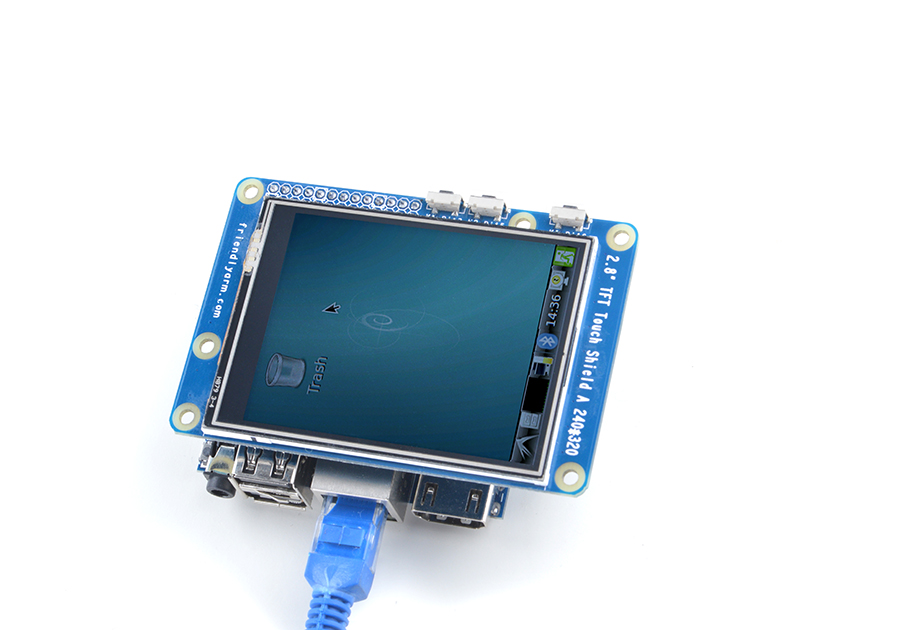
Connect to NanoPi M1 Plus:
Refer to the following hardware setup to connect the module to the NanoPi M1 Plus:
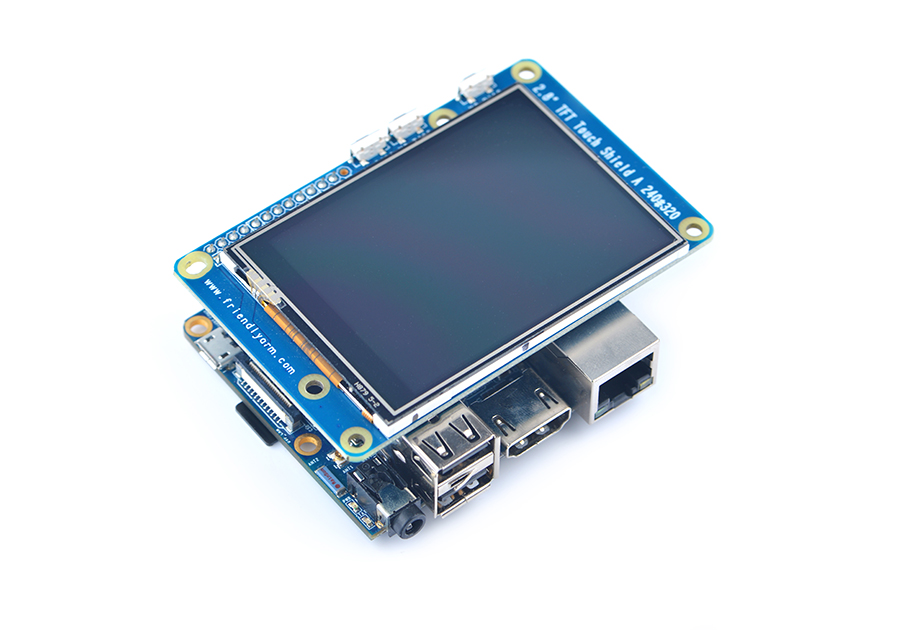
Connect to NanoPi NEO:
Refer to the following hardware setup to connect the module to the NanoPi NEO:
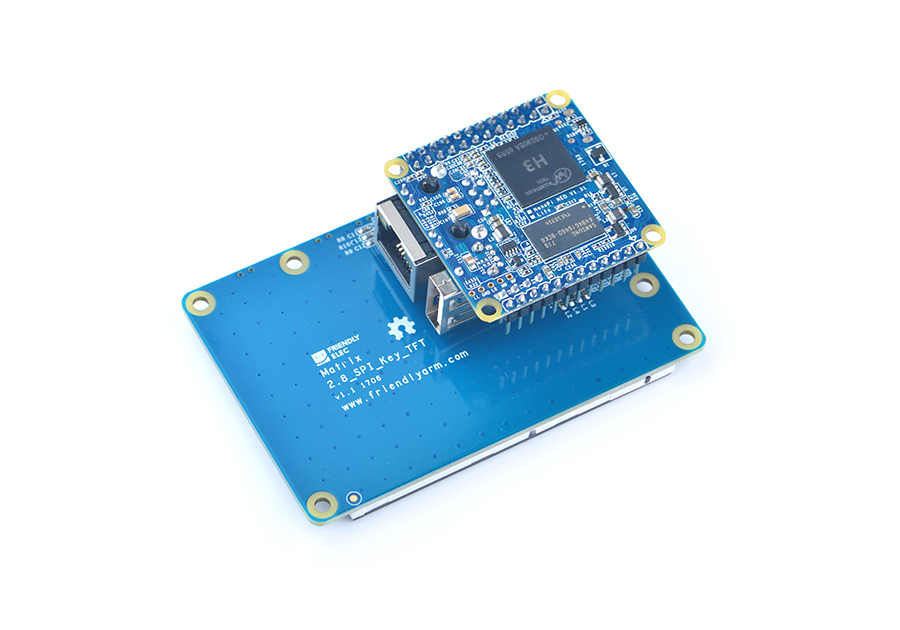
Connect to NanoPi NEO Air:
Refer to the following hardware setup to connect the module to the NanoPi NEO Air:
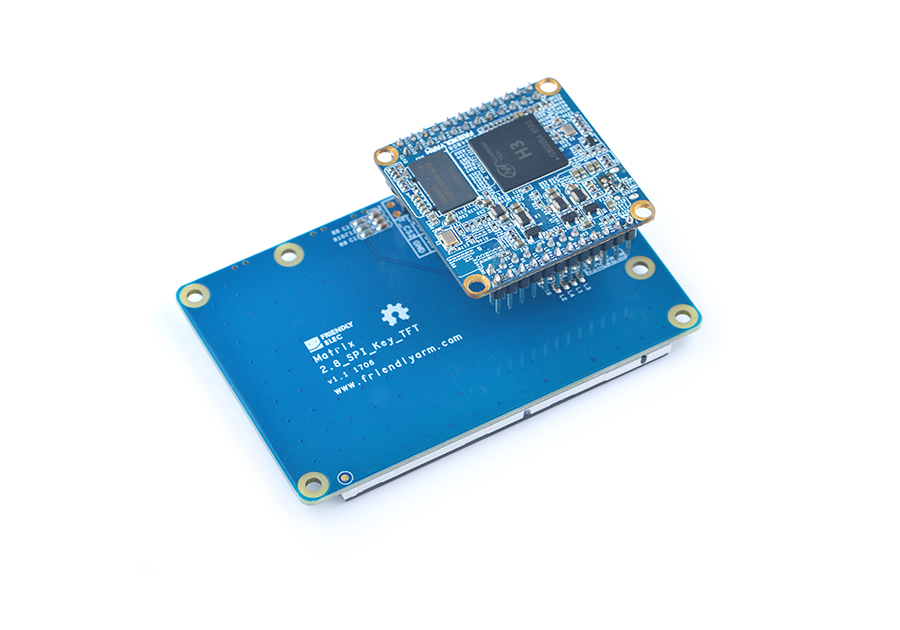
4.2 H5 Based Boards
Connect to NanoPi NEOPlus2:
Matrix-2'8_SPI_Key_TFT_nanopi_neo_plus2
4.3 S5P4418 Based Boards
Connect to NanoPi 2:
Refer to the following hardware setup to connect the module to the NanoPi 2:
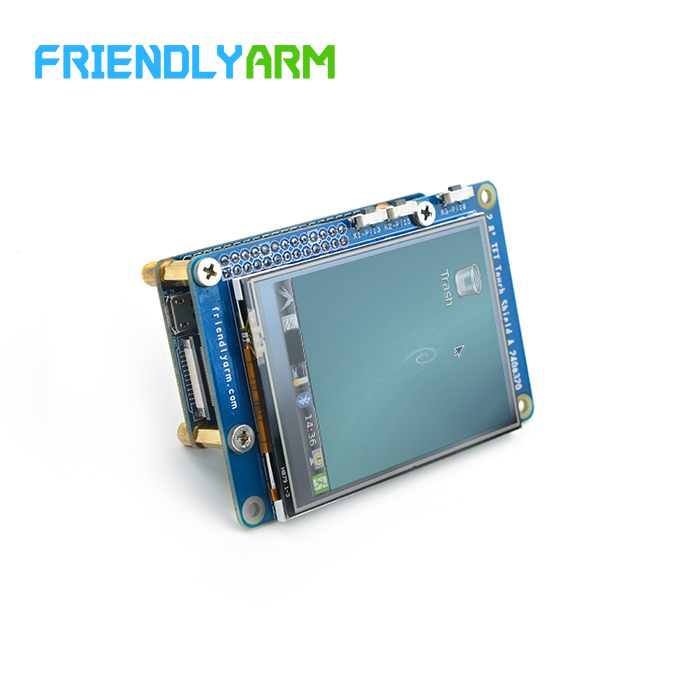
Connect to NanoPi M2 / NanoPi 2 Fire:
Refer to the following hardware setup to connect the module to the NanoPi M2 / NanoPi 2 Fire:
Matrix-2'8_SPI_Key_TFT_nanopi_m2
5 Compile & Run Test Program
5.1 Under H3/H5 & Mainline Linux-4.x Kernel
If you use a FriendlyElec's H3/H5 board under Mainline Linux-4.x kernel you need to enable the 2.8"TFT with npi-config.Start npi-config as root:
$ npi-configOpen the following menu:
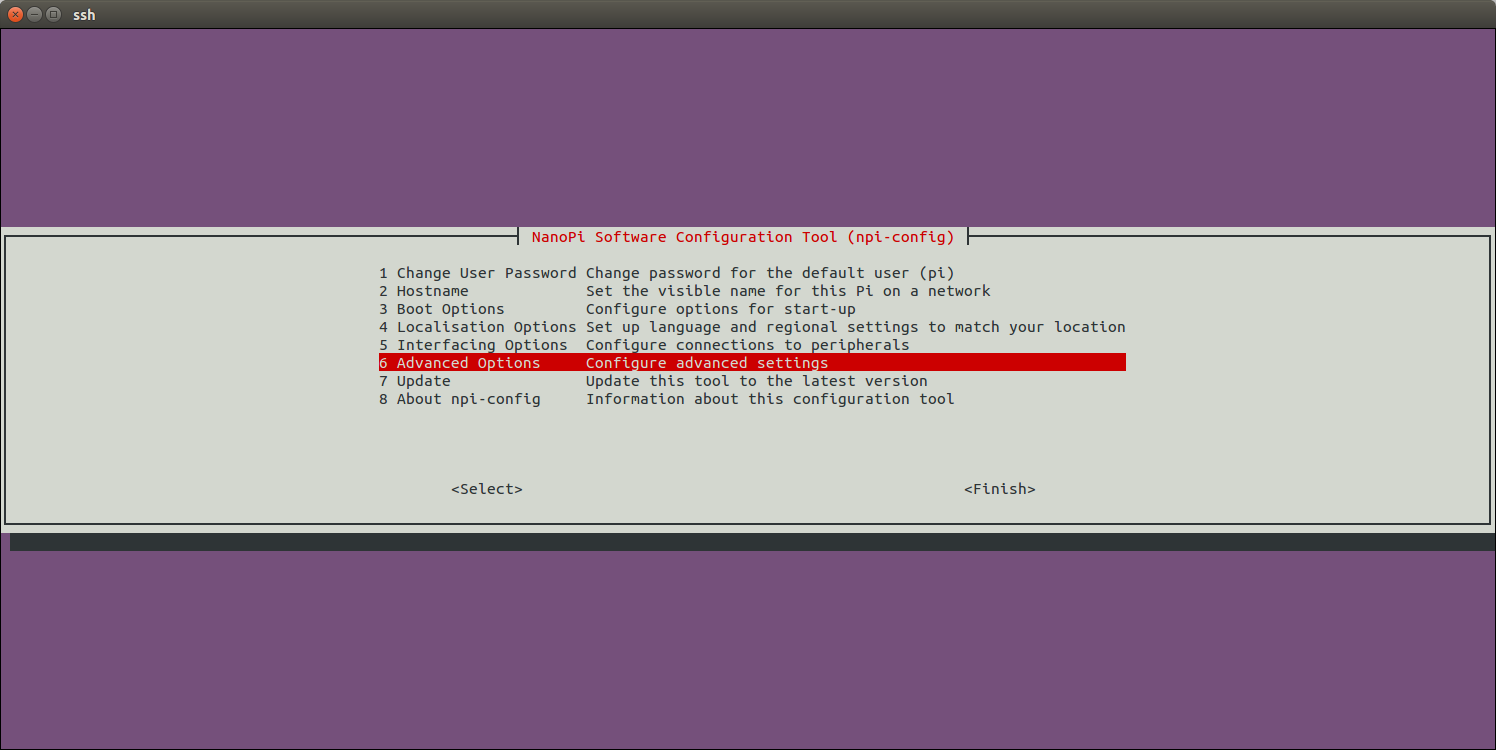
Open SPI:
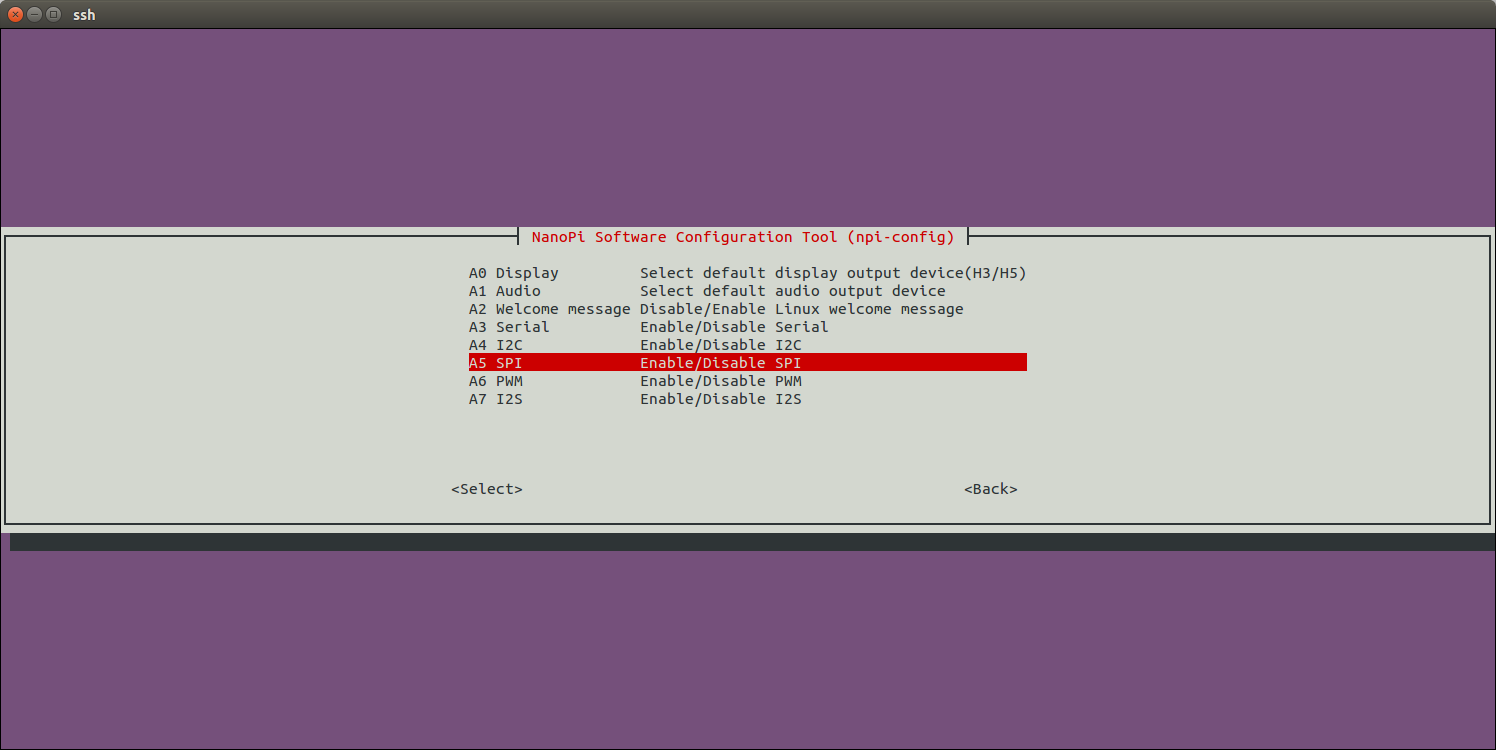
Enable/Disable SPI0:
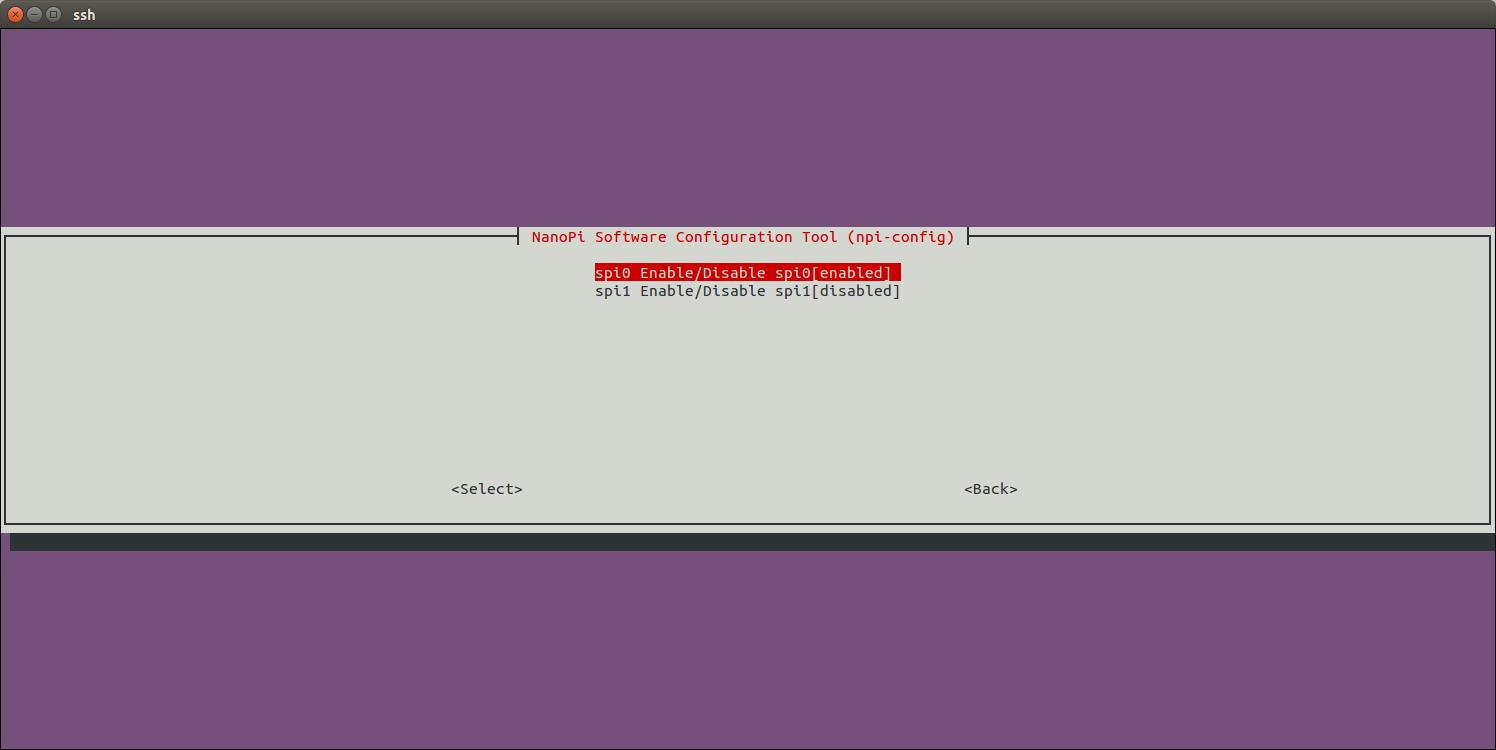
Enable SPI0 and then select Matrix-2.8"_SPI_Key_TFT:
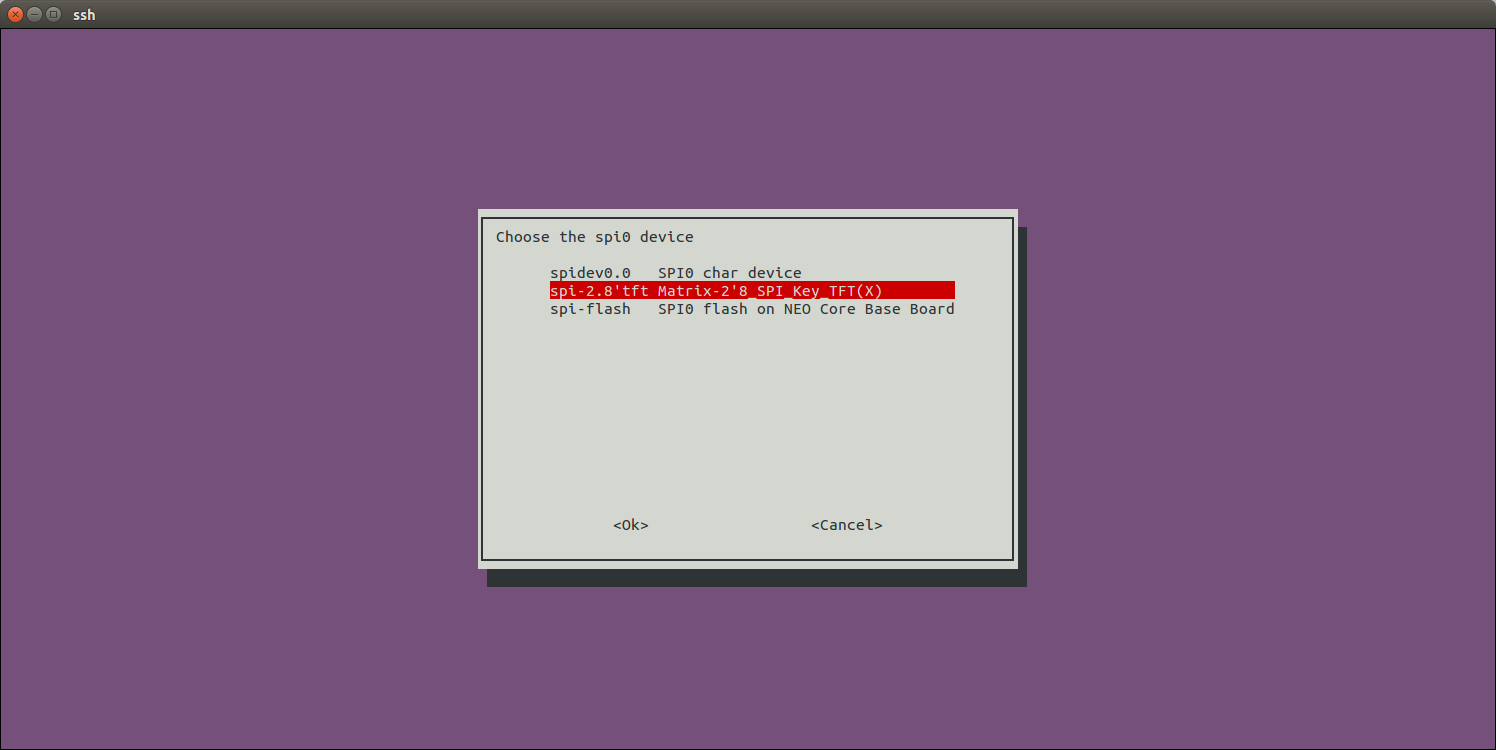
Return to the main menu and do <Finish>. Reboot your system and run the following command to check whether or not the Matrix-2.8"_SPI_Key_TFT is enabled:
$ ls /dev/fb-st7789s /dev/fb-st7789s
/dev/fb-st7789s stands for a framebuffer device
$ ls /dev/input/ts-ads7846 /dev/input/ts-ads7846
/dev/input/ts-ads7846 stands for a touch device
When you first start the system you will be prompted to click on five points to do calibration.
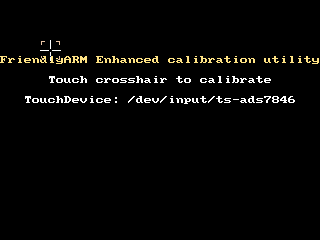
Note: in the mainline Linux-4.x kernel Pin12 of Matrix-2'8_SPI_Key_TFT-1706 is by default set as touch device's enable/disable pin.
After you enable the Matrix-2'8_SPI_Key_TFT with npi-config your system will set it as your default display device. If you want to make Qt-demo auto-start on system boot you can follow the steps below:
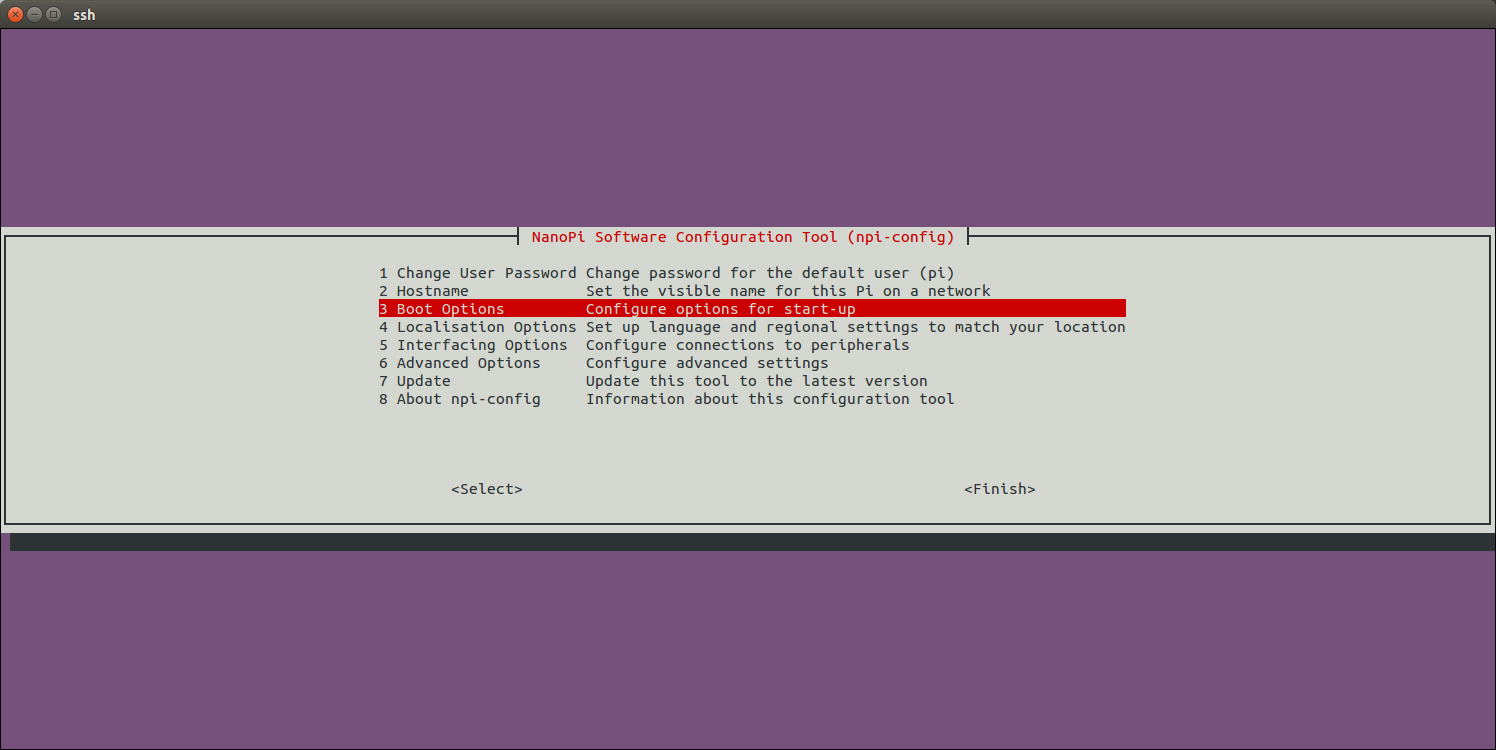
Enter Autologin:
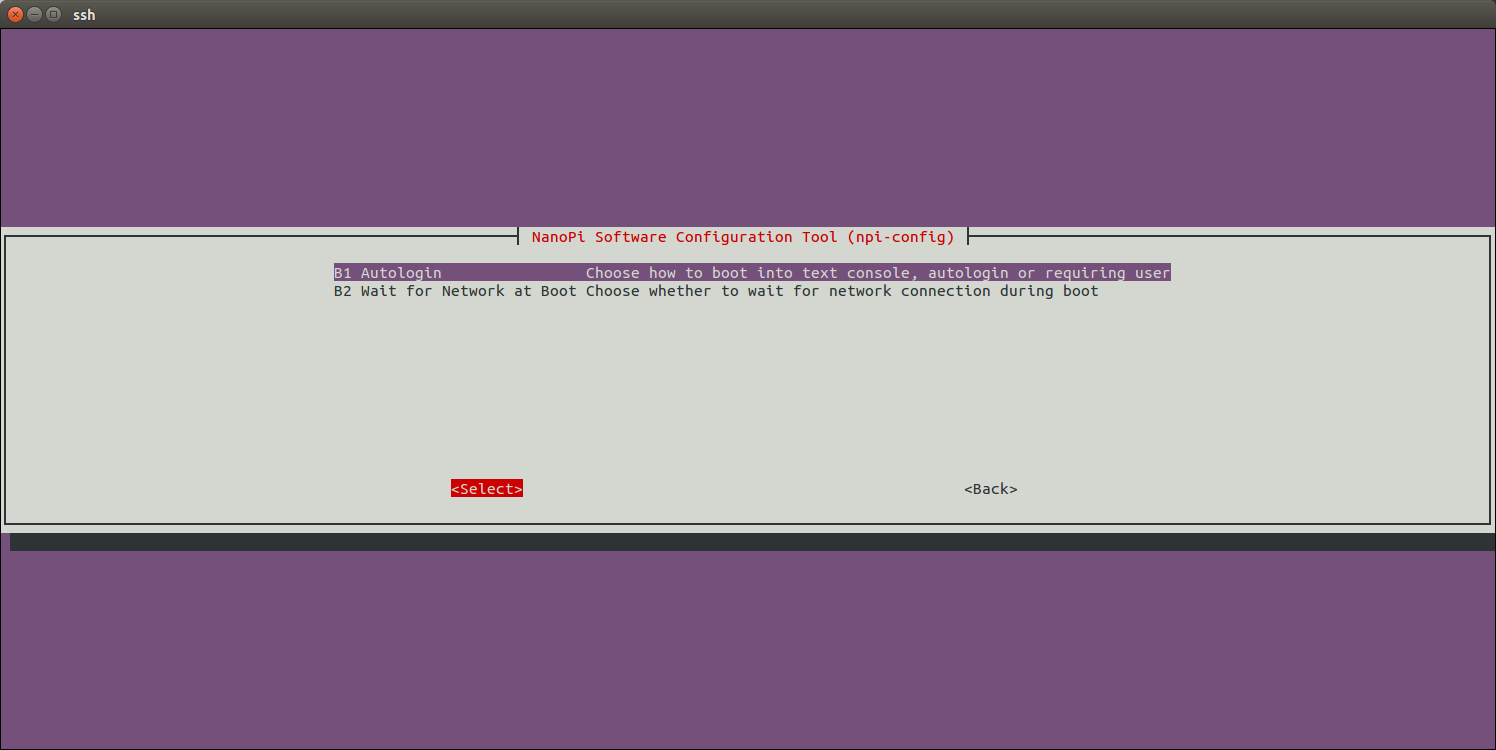
Enter 去Qt/Embedded:
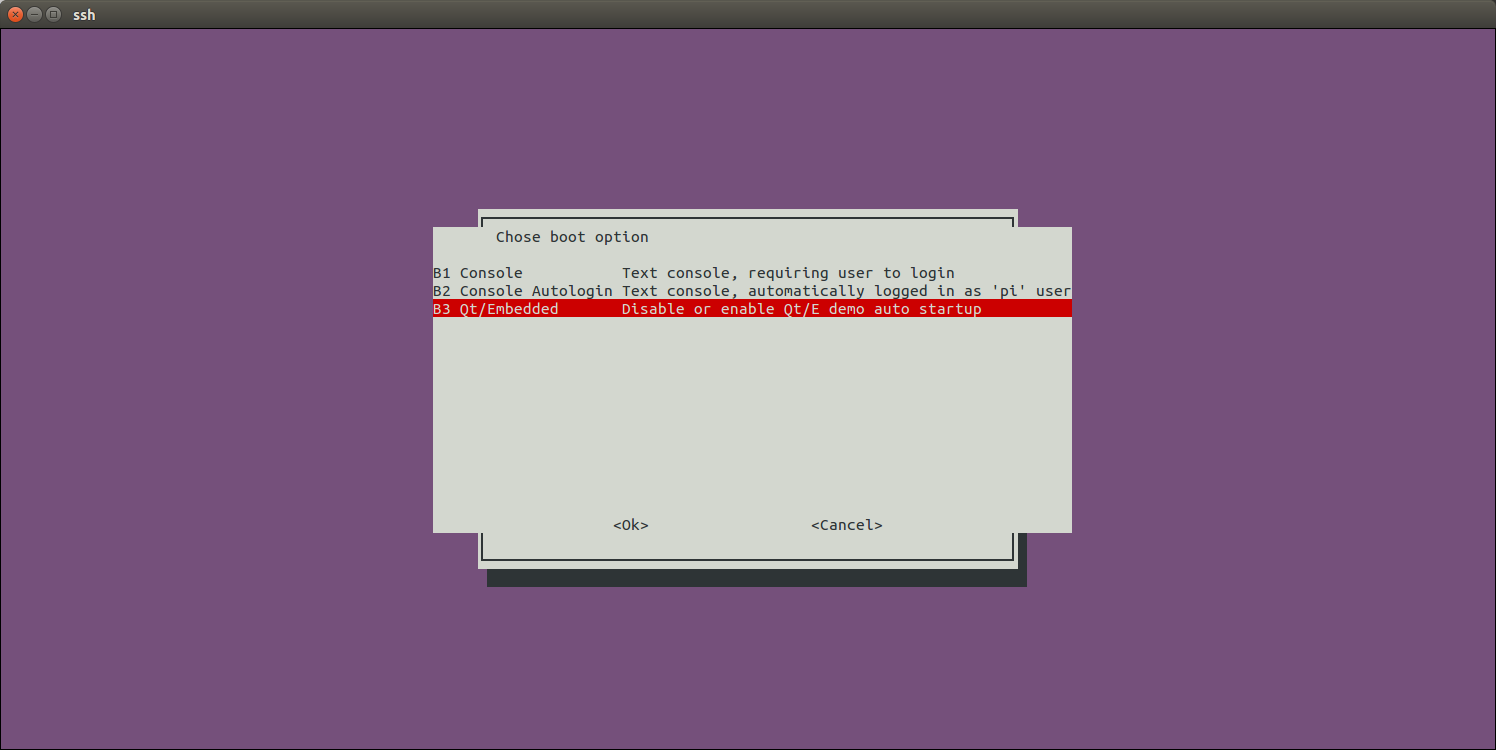
Enable Qt/E Demo:
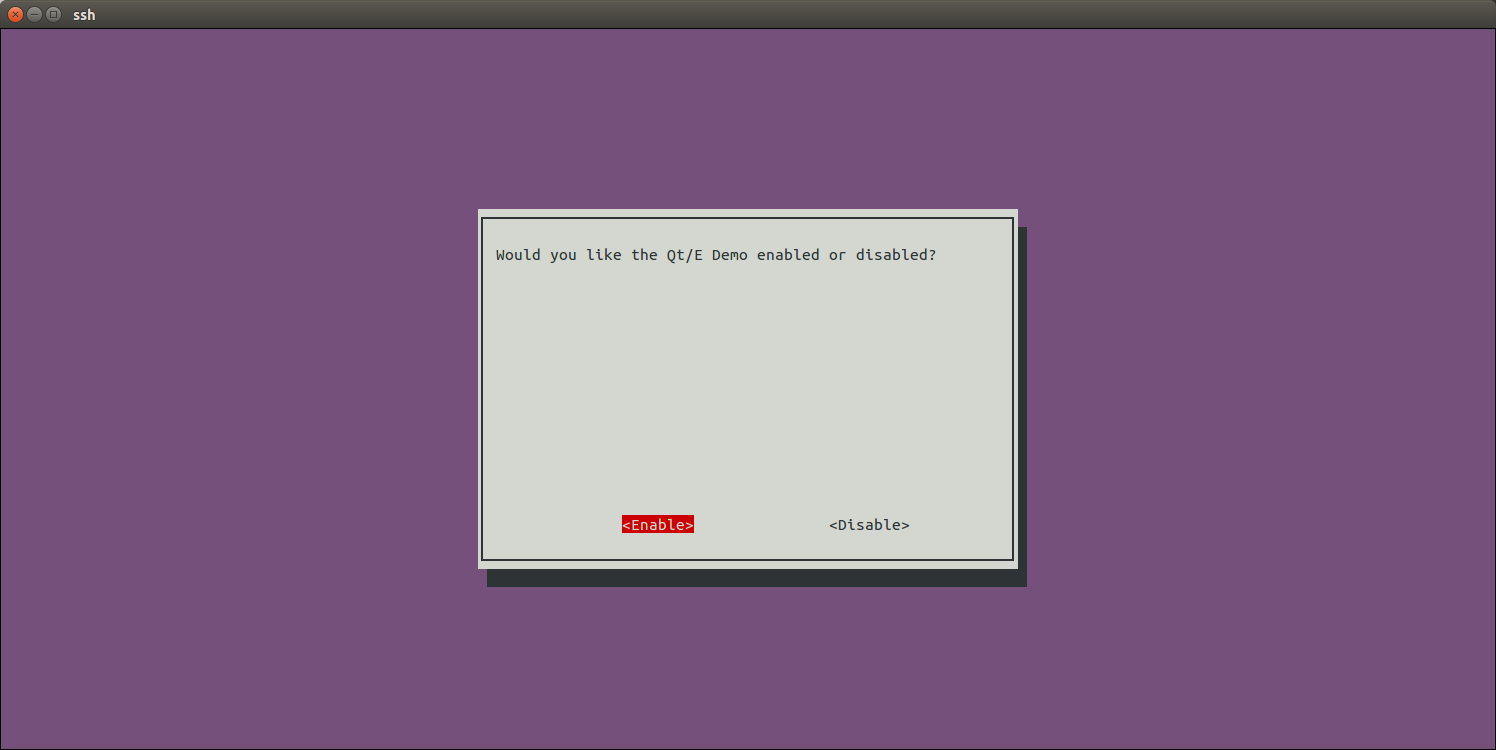
Return to the main menu and do <Finish>.Reboot your system and your Qt/E demo will be started automatically:
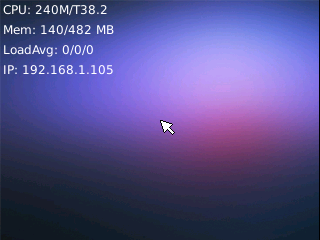
5.2 Under H3 & Linux-3.4 Kernel/S5P4418 & Linux-3.4 Kernel
5.2.1 在Ubuntu-Core上运行Qt程序
5.3 Run Qt Programs on Ubuntu-Core
FriendlyElec's Ubuntu-Core supports Qt. Users can run a Qt application by following the steps below.
Boot Ubuntu-Core on a board and clone the Matrix code samples:
$ apt-get update && apt-get install git $ git clone https://github.com/friendlyarm/matrix.git
After it is done a "matrix" directory will be generated.
Compile and Run Qt Test Program:
cd matrix/demo/nanopi-status ./build.sh ./run.sh /dev/fb-st7789s
The nanopi-status is a simple Qt program which shows system information. Here is what you expect to observe:
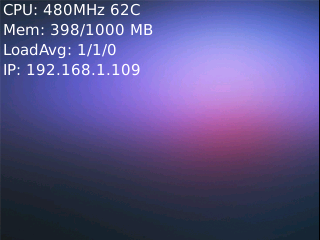 The run.sh script will load TFT's driver and run the Qt program. After the driver is successfully loaded a device node /dev/fb-st7789s will be generated. You can check whether or not the driver is loaded successfully by running the following commands
The run.sh script will load TFT's driver and run the Qt program. After the driver is successfully loaded a device node /dev/fb-st7789s will be generated. You can check whether or not the driver is loaded successfully by running the following commands
lsmod Module Size Used by fbtft_device 29235 0
After the TFT's driver is loaded you can enable the TFT by running the following commands
cd matrix/demo/matrix-lcdtest make export LCDSET_FB_DEV=/dev/fb-st7789s ./matrix-lcdtest
You will watch the display.
5.3.1 在2.8寸屏上显示Debian桌面
对于支持Debian系统的开发板,用户可以通过下列操作将Debian的桌面显示在2.8寸屏上。
启动开发板并运行Debian系统,进入系统后克隆Matrix代码仓库:
$ apt-get update && apt-get install git $ git clone https://github.com/friendlyarm/matrix.git
克隆完成后会得到一个名为matrix的目录。
对于H3系列的开发板,需要先修改X11的配置文件:
$ vi /etc/X11/xorg.conf
将字样“/dev/fb0”修改为“/dev/fb-st7789s”。
执行下列命令在2.8寸屏上启动Debian桌面:
$ cd matrix/demo/nanopi-status/ $ ./display-debian.sh /dev/fb-st7789s
用触摸笔在屏幕上点击4个点完成校准并进入Debian桌面,效果如下:
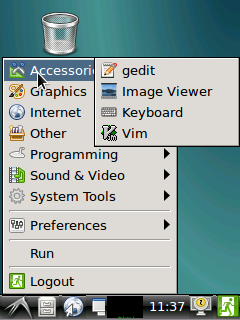
完成触摸校准后终端会有类似如下的打印信息:
Section "InputClass" Identifier "calibration" MatchProduct "ADS7846 Touchscreen" Option "Calibration" "196 3825 3887 358" Option "SwapAxes" "0" EndSection
将上述内容手动保存在/usr/share/X11/xorg.conf.d/99-calibration.conf中,以后就再也无需进行校准了。
6 Resources
7 Update Log
7.1 Feb-24-2016
- Added the driver's source code location in Section 5.2
7.2 June-17-2016
- Re-organized and simplified wiki
7.3 March-5-2017
- Added sections 3.2, 3.3, 3.4 and 4.1
